Address
304 North Cardinal
St. Dorchester Center, MA 02124
Work Hours
Monday to Friday: 7AM - 7PM
Weekend: 10AM - 5PM
Address
304 North Cardinal
St. Dorchester Center, MA 02124
Work Hours
Monday to Friday: 7AM - 7PM
Weekend: 10AM - 5PM
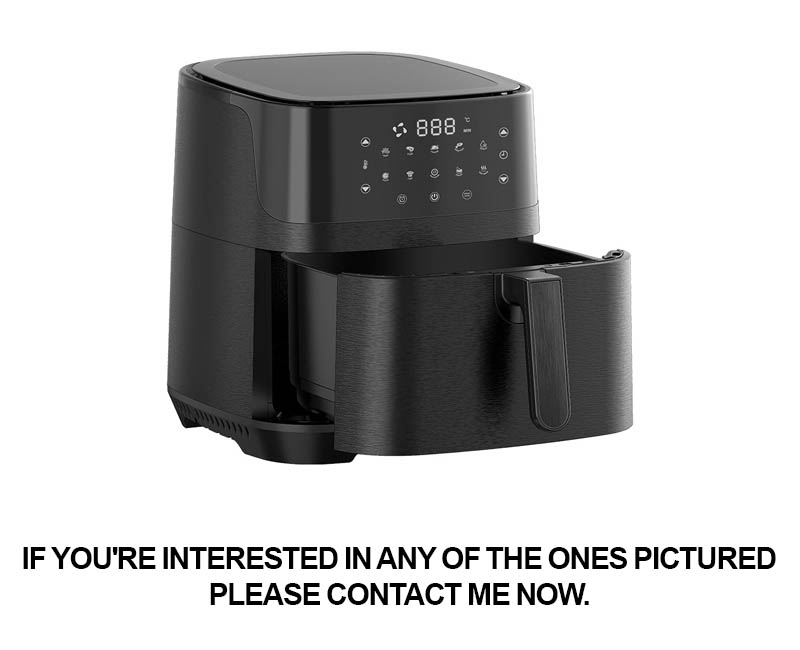
In the ever-evolving landscape of kitchen appliances, the air fryer has emerged as a beacon of innovation and convenience. Its popularity has surged, transforming the way we cook and consume food. As we delve into the world of air fryers, we explore the significance of turnkey UL certification, the value of OEM partnerships, and the latest design innovations. We also analyze market trends and consumer demand, delve into the data-driven insights shaping the industry, and showcase successful turnkey air fryer OEM projects. Finally, we gaze into the future, predicting potential developments and opportunities in the air fryer OEM market.
The air fryer, once a niche appliance in kitchen gadgetry, has now emerged as a true game-changer in the kitchen appliance industry. With its ability to mimic the crispy texture of fried foods with significantly less oil, this compact kitchen tool has become a favorite among health-conscious consumers and busy chefs alike.
Its rise can be attributed to several key factors. Firstly, the growing awareness of health and wellness has pushed consumers towards cooking methods that minimize fat content. Air frying, which uses hot air to circulate around the food, is an ideal solution for those looking to indulge in their favorite fried treats without the guilt.
Secondly, the convenience factor cannot be overlooked. Air fryers are compact and easy to use, allowing even the most inexperienced cooks to achieve professional-grade results with minimal effort. The quick cooking times and simple cleanup processes have made air fryers a must-have for any modern kitchen.
As technology has advanced, the capabilities of air fryers have expanded. New models now offer a variety of features, such as adjustable temperature controls, automatic shut-off functions, and even the ability to roast, grill, and bake alongside their original frying capabilities. This versatility has broadened the appeal of air fryers to a wider audience.
The impact of the air fryer on the kitchen appliance industry has been profound. Traditional deep fryers, once the go-to for crispy fried foods, have seen a decline in sales as consumers opt for the healthier alternative. Major appliance brands have scrambled to catch up, investing in research and development to bring their own line of air fryers to market.
Moreover, the air fryer has sparked a wave of innovation in kitchen design. Cooks are no longer confined to the traditional oven or stovetop. The versatility of the air fryer has led to the creation of countertop kitchen appliances that combine multiple cooking functions into a single device, often referred to as multi-functional air fryers.
The market has also seen the emergence of new brands specializing in air fryers. These companies focus solely on the air fryer niche, allowing them to refine their products and cater to the specific needs of air fryer enthusiasts. This specialization has led to a wide array of models, each with unique features that cater to different cooking styles and preferences.
The air fryer’s popularity has not gone unnoticed by retailers and e-commerce platforms. Online marketplaces are brimming with options, and brick-and-mortar stores are dedicating shelf space to these appliances. This increased visibility has only fueled consumer interest and demand.
In terms of global trends, the air fryer has become a global phenomenon. From North America to Europe and Asia, air fryers are enjoying widespread adoption. This is particularly true in regions where there is a high incidence of obesity and heart disease, as health authorities often recommend air frying as a healthier cooking method.
However, the rise of the air fryer hasn’t come without challenges. The appliance has faced criticism for its initial cost and potential noise levels, as some early models could be quite loud. Nonetheless, advancements in technology have led to quieter, more affordable models that address these concerns.
Looking ahead, the future of the air fryer seems bright. As consumer demand continues to grow, we can expect to see even more innovative features and designs. Brands are exploring new materials for durability and energy efficiency, and some are even integrating smart technology to allow for remote monitoring and control.
In conclusion, the air fryer has transformed the kitchen appliance industry by offering a healthier, more convenient alternative to traditional cooking methods. Its rise has been fueled by a combination of health-conscious consumer trends, technological advancements, and the appliance’s versatility. As the market continues to evolve, the air fryer’s impact on our cooking habits is likely to deepen, making it a staple in kitchens worldwide.

In the ever-evolving landscape of kitchen appliances, achieving turnkey UL certification for an air fryer has become a pivotal step for manufacturers aiming to enter the competitive market. Understanding this process is crucial, as it ensures both safety and consumer confidence.
The term “turnkey” in this context refers to a comprehensive solution provided by a certification body, where the entire process is handled from start to finish. This includes everything from initial product design to final certification, making it a one-stop service for companies looking to streamline their certification journey.
UL (Underwriters Laboratories) certification, a globally recognized mark of safety, is particularly significant in the United States and Canada. It signifies that the air fryer has been rigorously tested and meets stringent safety standards, which are essential for market entry in these regions.
To begin the process, manufacturers must submit their air fryer design and specifications to a UL-certified testing laboratory. This involves providing detailed information about the appliance’s components, materials, and construction, ensuring that all parts comply with safety regulations.
Once the submission is made, the testing phase begins. Engineers and technicians at the lab conduct a series of tests to evaluate the air fryer’s performance, including electrical safety, overheating protection, and material integrity. These tests are designed to simulate real-world scenarios and potential failure points to ensure the product is safe for consumer use.
One of the most critical aspects of the certification process is the evaluation of the air fryer’s electrical safety. This includes testing for insulation resistance, dielectric strength, and grounding effectiveness. The aim is to guarantee that the appliance poses no risk of electrical shock or fire.
Another crucial component of UL certification is the evaluation of the appliance’s thermal management. The air fryer must be able to handle high temperatures without the risk of overheating or starting a fire. This involves testing the appliance’s heat distribution, cooling systems, and heat resistance of its materials.
Materials used in the construction of the air fryer are also scrutinized. UL certification requires that all materials meet specific flammability standards, ensuring that the appliance is safe in the event of a fire. This includes testing for the auto-ignition temperature of materials and their ability to resist combustion.
The certification process also involves testing the air fryer’s user interface and controls. This includes verifying that the appliance’s buttons, switches, and displays are easy to use and that the product complies with relevant accessibility standards.
In addition to the technical tests, UL certification also requires that manufacturers provide detailed documentation. This includes manufacturing processes, quality control procedures, and safety data sheets for all materials used. This documentation ensures that the air fryer can be consistently produced to meet the same safety standards.
Once all tests are completed and the documentation is reviewed, the certification body issues a report. If the air fryer meets all the required standards, it is granted the prestigious UL certification mark, which can be used in marketing and advertising materials.
Having turnkey UL certification for an air fryer offers several benefits. It provides manufacturers with a competitive edge by assuring customers of the product’s safety and quality. It also opens up new markets, as many retailers and consumers prefer products with recognized safety certifications.
Furthermore, UL certification can be a requirement for insurance purposes, as manufacturers may need to prove compliance with safety standards to secure liability coverage. This certification also helps in avoiding potential legal issues related to product liability.
In conclusion, achieving turnkey UL certification for an air fryer is a complex but essential process. It not only ensures compliance with safety standards but also builds trust with consumers and retailers. For manufacturers looking to enter the market, understanding and navigating the UL certification process is a key step towards successful market entry and long-term business growth.

In the ever-evolving landscape of kitchen appliance manufacturing, Original Equipment Manufacturers (OEMs) play a pivotal role in driving innovation and efficiency. The importance of OEM partnerships in air fryer manufacturing cannot be overstated, as they offer a multitude of benefits that can significantly impact the quality, cost, and success of a product in the market.
Streamlined Production ProcessOEM partnerships allow manufacturers to outsource the production of air fryers to specialized companies that focus solely on the design and assembly of these appliances. This specialization means that production processes are optimized for efficiency, reducing the time and resources required to bring a product to market. By streamlining the production process, OEMs can ensure that the manufacturing of air fryers is both cost-effective and high-quality.
Access to Advanced TechnologyCollaborating with an OEM means gaining access to the latest technology and manufacturing techniques. These partners often invest heavily in research and development to stay ahead of market trends. This technology transfer can be invaluable for companies looking to introduce new features into their air fryer designs, such as smart controls, eco-friendly materials, or improved cooking capabilities.
Scalability and FlexibilityAs consumer demands fluctuate, having an OEM partner allows manufacturers to scale production up or down without the need to invest in additional facilities or equipment. This flexibility is particularly important in the rapidly changing kitchen appliance market, where trends can shift quickly. OEMs can adapt to these changes more swiftly, ensuring that the manufacturer’s product line remains competitive.
Quality Control and ComplianceOne of the most critical aspects of air fryer manufacturing is ensuring that products meet safety standards and regulatory requirements. OEM partners are well-versed in these standards and can help manufacturers navigate the complexities of certifications like UL (Underwriters Laboratories). This ensures that the air fryers being produced are not only safe for consumers but also compliant with international and local regulations.
Cost Reduction through Economies of ScaleWhen manufacturers work with OEMs, they often benefit from economies of scale. By producing a large volume of air fryers, the cost per unit can be significantly reduced. This cost reduction can be passed on to consumers, making the product more affordable and attractive in the market. Additionally, OEMs can often negotiate better prices for components and materials, further lowering costs.
Focus on Core CompetenciesBy outsourcing the manufacturing of air fryers to an OEM, manufacturers can concentrate on their core competencies, such as product design, marketing, and customer service. This strategic focus allows the manufacturer to excel in areas where they have the most expertise, rather than spreading resources too thin across various aspects of the business.
Collaboration on InnovationOEM partnerships often involve a collaborative approach to product development. This means that manufacturers can tap into the OEM’s creative resources and technical knowledge to push the boundaries of what’s possible in air fryer technology. Together, they can develop unique features and functionalities that set their products apart from the competition.
Reduced Lead TimesWith an established OEM relationship, manufacturers can enjoy shorter lead times for production. This is because OEMs are typically equipped to handle large production runs and can quickly respond to changes in demand. Reduced lead times can be a significant competitive advantage, as it allows manufacturers to respond more quickly to market opportunities and customer needs.
After-Sales SupportA reliable OEM partner will also offer after-sales support, which is crucial for the long-term success of a product. This support can include handling warranty claims, providing replacement parts, and offering technical assistance. For manufacturers, this means that they can offer their customers a higher level of service without needing to maintain a dedicated service team.
Global ReachOEMs often have a global footprint, which can be beneficial for manufacturers looking to expand into new markets. By leveraging the OEM’s established distribution channels and relationships with retailers, manufacturers can more easily bring their air fryers to customers around the world.
In conclusion, the importance of OEM partnerships in air fryer manufacturing is multifaceted. From production efficiency and technology access to cost savings and global reach, these collaborations offer a range of advantages that can significantly enhance a manufacturer’s competitive edge in the dynamic kitchen appliance market.
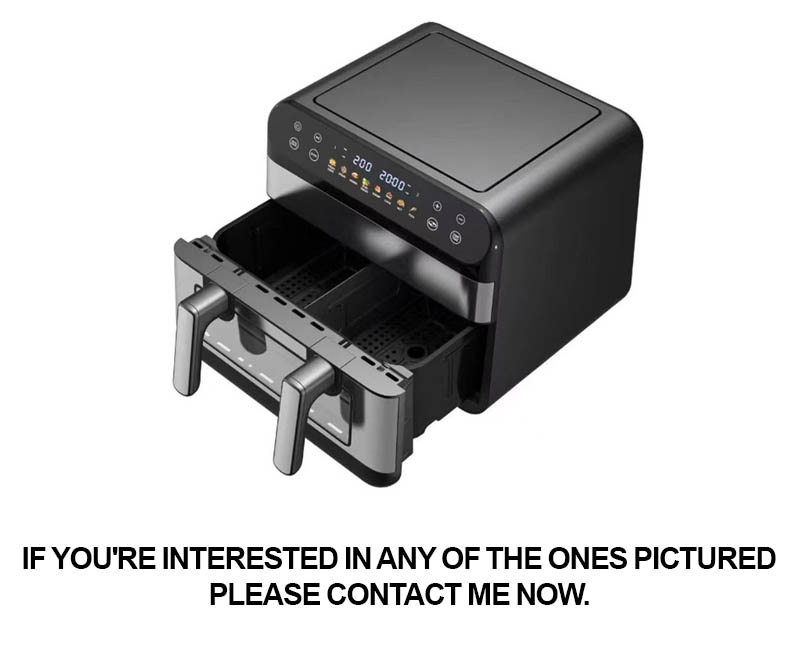
In recent years, the air fryer has emerged as a kitchen staple, offering a healthier alternative to traditional frying methods. But it’s not just the convenience and health benefits that have people talking; it’s the constant evolution of air fryer design that keeps the market buzzing with excitement. Let’s dive into some of the latest innovations that are reshaping the air fryer landscape.
The sleek and modern aesthetic has become a hallmark of new air fryer designs. Manufacturers are now focusing on creating appliances that not only perform well but also complement the decor of contemporary kitchens. From minimalist white to bold black, the color palette has expanded to cater to various kitchen styles.
Smart technology integration is another significant innovation. Many modern air fryers now come with built-in smart features that allow users to control their appliances remotely through smartphones or tablets. This connectivity means users can start their cooking before they even step into the kitchen, adjusting settings or monitoring progress from anywhere.
Efficiency is a key focus in the latest air fryer designs. With the rise of eco-conscious consumers, appliances that consume less energy are becoming more popular. New models are incorporating energy-saving technologies that reduce power consumption without compromising performance. This not only helps the environment but also saves money on electricity bills.
One of the most exciting developments in air fryer design is the expansion of cooking capabilities. While the classic air fryer is great for crispy fries and chicken, newer models are expanding their repertoire to include baking, roasting, and even dehydrating. This versatility allows for a wider range of recipes to be cooked in the same appliance, making it a more valuable tool in the kitchen.
The interior of air fryers is also seeing improvements. Many new models now feature non-stick coatings that are more durable and easier to clean than ever before. These coatings not only make the appliance more hygienic but also extend the life of the fryer itself.
Safety features have been a significant area of innovation as well. Modern air fryers come with advanced heating elements that prevent overheating and overcooking, reducing the risk of fire or food spoilage. Additionally, many models now include safety locks to prevent accidental operation, especially when there are children in the home.
Another area where air fryers are pushing boundaries is in their capacity. Larger models have been introduced to accommodate larger families or those hosting gatherings. These larger air fryers can handle multiple batches of food at once, making batch cooking and meal prepping more efficient.
The design of the cooking basket has also evolved. Some new models feature a more uniform cooking surface, ensuring that food cooks evenly and achieves that perfect crispy texture. The baskets are often designed with a deeper well to prevent oil splatter and make for easier cleanup.
In terms of functionality, some air fryers are now equipped with programmable timers and temperature controls. Users can set the exact cooking time and temperature for their desired food, ensuring that every meal is cooked to perfection.
The integration of air fryers with other kitchen appliances is another trend. Combining an air fryer with an oven or a slow cooker can create a multifunctional kitchen ecosystem that streamlines cooking processes and saves space.
Lastly, there’s a growing trend towards sustainability in air fryer design. Some manufacturers are exploring the use of recycled materials and eco-friendly packaging, reflecting a broader commitment to environmental responsibility.
These innovations in air fryer design are not just about making cooking easier or more enjoyable; they’re about meeting the changing demands and expectations of consumers. As the market continues to evolve, it’s clear that the air fryer will remain a versatile and exciting addition to any kitchen.

In the ever-evolving landscape of kitchen appliances, the air fryer has emerged as a star player, reshaping the way we cook and consume. This surge in popularity has been driven by a variety of market trends and consumer demands that are shaping the air fryer sector. Let’s delve into the nuances of these dynamics.
Consumers are increasingly looking for healthier cooking options, and air fryers have become a beacon for those seeking to reduce oil usage while still enjoying crispy, golden fried foods. The demand for healthier living has led to a shift towards appliances that offer healthier alternatives without compromising on taste or convenience.
Smart technology integration is another trend that’s gaining traction. Air fryers are now not just cooking devices but smart kitchen companions, offering features like programmable settings, Wi-Fi connectivity, and even Bluetooth compatibility for hands-free operation. This technological advancement has not only enhanced the user experience but has also opened up new possibilities for customization and control.
The trend towards sustainability has also influenced the air fryer market. Eco-conscious consumers are seeking appliances that are energy-efficient and made from recyclable materials. Manufacturers are responding by producing air fryers that consume less energy and are designed with the environment in mind, appealing to a broader audience.
There’s a growing preference for multifunctional appliances that can perform a variety of tasks. Air fryers that come with additional features such as dehydrating, roasting, and baking capabilities are becoming increasingly popular. This versatility allows consumers to reduce the number of appliances they need in their kitchen, making it a more space-efficient and cost-effective choice.
The air fryer sector is also seeing a rise in personalized and niche products. From air fryers designed for specific dietary needs, such as gluten-free or vegan models, to those tailored for specific cuisines, there’s a clear market segment for these specialized appliances. This trend reflects the diversity of consumer preferences and the desire for tailored solutions.
In terms of design, there’s a noticeable shift towards sleeker, more modern aesthetics. Consumers are no longer satisfied with utilitarian designs; they want appliances that complement their kitchen decor. Air fryers with glass fronts, brushed stainless steel finishes, and minimalist designs are becoming more sought after, reflecting a trend towards aesthetic appeal.
The rise of online shopping has also played a significant role in the air fryer market. With more people turning to e-commerce for their kitchen appliance needs, there’s a heightened focus on user reviews and social proof. Brands that invest in creating a positive online presence and encourage word-of-mouth marketing are likely to see increased sales.
As the air fryer market continues to grow, there’s an emphasis on innovation in terms of both functionality and design. Brands are exploring new materials, such as ceramic-coated baskets for healthier cooking, and innovative cooking techniques that allow for even more efficient and delicious results.
Lastly, the air fryer sector is influenced by global culinary trends. As people become more adventurous in their food choices, they’re looking for appliances that can help them recreate dishes from around the world. This has led to a surge in air fryers that offer a variety of temperature settings and cooking modes, catering to international flavors.
In conclusion, the air fryer sector is a dynamic and ever-growing market, driven by a combination of health-conscious consumers, technological advancements, sustainability concerns, and the quest for convenience and versatility. Understanding these market trends and consumer demands is crucial for any manufacturer looking to thrive in this competitive space.
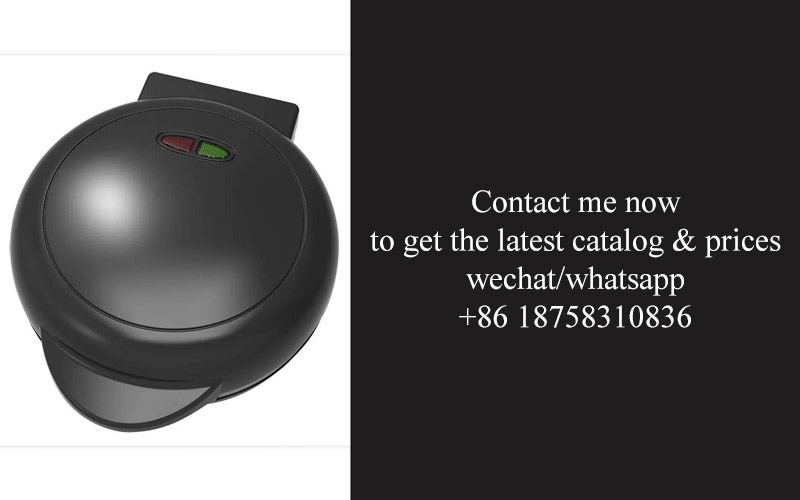
In the competitive landscape of the air fryer market, data and analysis play a pivotal role in guiding manufacturers and retailers. Understanding the significance of these insights is crucial for staying ahead in a rapidly evolving sector.
Consumer Behavior Patterns: Unveiling the PreferencesAnalyzing consumer behavior patterns has become an essential task for companies looking to cater to the air fryer market. By studying purchasing habits, preferences, and usage statistics, businesses can identify trends that influence design, features, and marketing strategies. For instance, insights into which size and capacity of air fryers are most popular, or which health benefits are most appealing to consumers, can directly impact product development.
Technological Advancements: Keeping Pace with InnovationData-driven analysis also helps in tracking technological advancements. The air fryer market is constantly evolving with new features, such as programmable settings, smart technology integration, and improved energy efficiency. By analyzing which innovations are gaining traction, manufacturers can focus their R&D efforts on the most promising features, ensuring their products remain competitive.
Regulatory Compliance: Navigating Safety StandardsData analysis is not just about consumer preferences and technology; it’s also about ensuring regulatory compliance. The air fryer market, like all kitchen appliance sectors, must adhere to safety standards and certifications. By leveraging data analytics, companies can stay informed about the latest safety regulations and certifications, such as UL (Underwriters Laboratories) certification, to ensure their products meet these requirements.
Market Segmentation: Tailoring Strategies to Diverse AudiencesThe air fryer market is diverse, with different segments of consumers having unique needs and purchasing power. Data and analysis allow companies to segment the market effectively, targeting specific demographics with tailored marketing campaigns and product offerings. For example, health-conscious consumers might be more interested in models that offer lower fat content and higher cooking efficiency, while budget-conscious buyers may prioritize affordability over advanced features.
Competitor Analysis: Gaining Strategic AdvantageUnderstanding the competitive landscape is key to success in any market. Data analysis can provide valuable insights into competitor offerings, pricing strategies, and market share. By comparing their products to those of competitors, manufacturers can identify gaps in the market or areas where they can differentiate their air fryers, potentially leading to a competitive edge.
Sales and Distribution: Optimizing the Supply ChainData-driven insights can also help optimize the sales and distribution process. By analyzing sales data, companies can identify the most effective channels for distribution, whether it’s through e-commerce, brick-and-mortar stores, or direct-to-consumer models. This information ensures that the product is accessible to the target audience while minimizing distribution costs.
Economic Factors: Anticipating Market FluctuationsEconomic trends and market fluctuations have a significant impact on consumer spending habits. Data analysis allows businesses to anticipate these changes and adjust their strategies accordingly. For instance, during economic downturns, consumers may prioritize value over premium features, prompting companies to focus on cost-effective solutions.
Brand Perception and Marketing: Crafting a Strong ImageBrand perception and marketing are critical in the air fryer market. Data insights can help in crafting compelling marketing messages that resonate with the target audience. By understanding consumer sentiment and feedback, companies can build a strong brand image that reflects the quality and innovation of their products.
Long-term Planning: Future-Proofing the BusinessLastly, data and analysis are instrumental in long-term planning. By forecasting market growth, consumer trends, and technological advancements, businesses can invest in research and development, ensuring that their products remain relevant and competitive well into the future.
In conclusion, the role of data and analysis in shaping the air fryer market is multifaceted, influencing everything from product development to marketing strategies and long-term business planning. By harnessing these insights, companies can navigate the complexities of the market and position themselves for success.
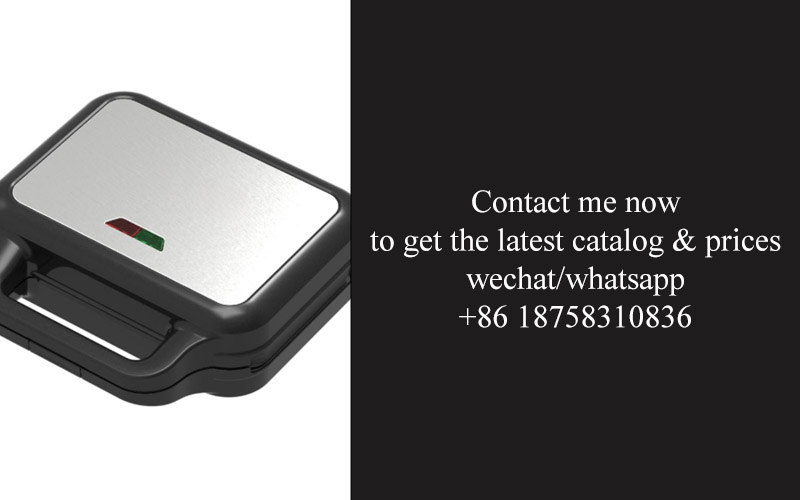
In the competitive landscape of kitchen appliance manufacturing, several turnkey air fryer OEM projects have emerged as shining examples of successful partnerships. These case studies highlight the intricacies involved in bringing a new air fryer to market and the key factors that contribute to their success.
One such project involves a small, innovative startup that partnered with a well-established OEM manufacturer. The startup had a unique concept for an air fryer that promised to revolutionize the way consumers cook healthy, crispy foods. The OEM team was tasked with not only manufacturing the air fryer but also ensuring it met stringent safety and quality standards.
The OEM manufacturer began by conducting thorough research into the startup’s design, identifying potential areas for improvement and cost optimization. They worked closely with the startup’s engineers to refine the design, ensuring it was not only user-friendly but also efficient and durable. The result was a sleek, compact air fryer that quickly caught the attention of consumers.
Throughout the development process, the OEM manufacturer leveraged their expertise in supply chain management to source high-quality components at competitive prices. They also implemented rigorous quality control measures to ensure every unit that left the factory met the highest standards. This attention to detail was crucial in maintaining the startup’s brand reputation and customer trust.
Another case study showcases a large multinational corporation that ventured into the air fryer market. Recognizing the growing consumer demand for healthier cooking options, the company decided to invest in an OEM partnership to quickly bring a new product to market. The OEM partner was chosen for their extensive experience in manufacturing kitchen appliances and their ability to scale production efficiently.
The OEM manufacturer took a strategic approach to the project, beginning with a comprehensive market analysis to understand consumer preferences and emerging trends. They then collaborated with the corporation’s design team to create an air fryer that not only met the company’s brand standards but also offered unique features that set it apart from competitors.
One standout feature of this air fryer was its ability to automatically adjust cooking temperatures and times based on the type of food being prepared. This innovation was made possible through advanced technology and precise engineering, all of which were managed by the OEM manufacturer. The end result was a product that not only simplified the cooking process but also reduced the risk of overcooking or burning food.
In yet another case study, a mid-sized appliance manufacturer took on the challenge of producing a budget-friendly air fryer for a new retail chain. The OEM project required a delicate balance between cost and quality, as the goal was to offer an affordable yet reliable product to price-conscious consumers.
The OEM manufacturer tackled this challenge by streamlining their production process, using efficient assembly lines and lean manufacturing techniques. They also focused on sourcing cost-effective materials without compromising on safety or performance. The result was a high-quality air fryer that was priced competitively, making it an attractive option for budget-conscious shoppers.
Each of these case studies demonstrates the importance of a strong partnership between an OEM manufacturer and a brand or startup. The OEM’s role in these projects goes beyond just manufacturing; it involves strategic planning, innovative design, efficient production, and quality control. By working together, these partners are able to bring successful air fryer products to market that resonate with consumers and stand out in a crowded marketplace.
The success of these turnkey air fryer OEM projects can be attributed to several key factors. First, the OEM manufacturers’ deep understanding of the market and consumer needs allowed them to develop products that truly met the demands of the target audience. Second, their ability to manage complex supply chains and maintain high production standards ensured that each product was of the highest quality. Finally, their willingness to innovate and adapt to new trends helped these projects stay ahead of the competition.
These case studies serve as a testament to the power of collaboration in the air fryer market. By combining the creative vision of a brand with the technical expertise of an OEM manufacturer, it’s possible to create products that not only meet but exceed consumer expectations. As the air fryer market continues to grow, these successful partnerships will likely become more common, driving innovation and offering consumers a wider range of choices.
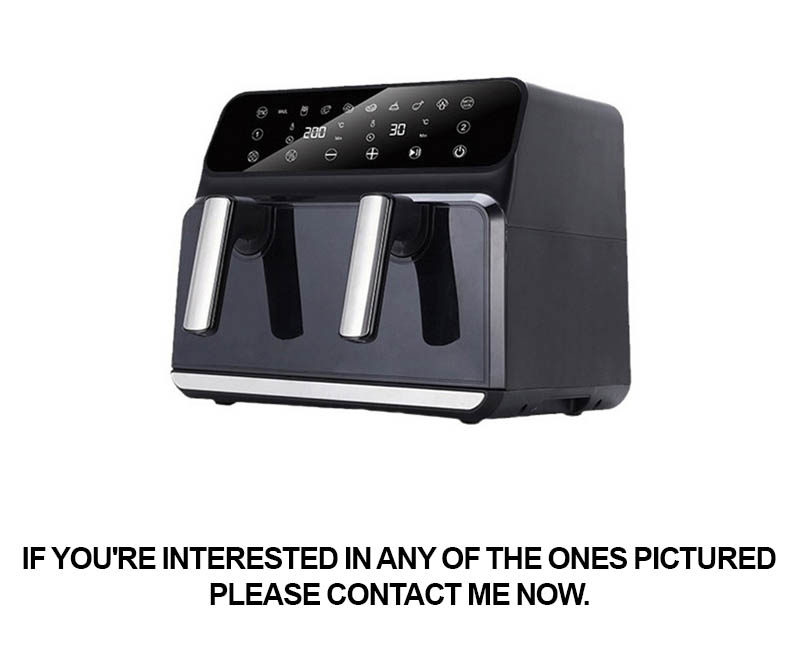
Air fryers have soared in popularity, not just as a kitchen gadget but as a symbol of modern culinary innovation. The market has seen a surge in demand, and it’s not just for the convenience they offer; it’s the technology behind them that’s truly groundbreaking. Let’s dive into some of the successful turnkey air fryer OEM projects that have set new standards in the industry.
In one such project, a leading OEM manufacturer collaborated with a global retail giant to develop a range of air fryers that were not only energy-efficient but also eco-friendly. The partnership leveraged cutting-edge technology to create a product that could appeal to environmentally conscious consumers. The design incorporated smart features, like automatic shut-off and adjustable temperature controls, making it a hit among health enthusiasts.
Another notable case study involves a partnership between a mid-sized appliance brand and a renowned technology firm. They combined their expertise to produce an air fryer that could connect to a user’s smartphone via an app. This allowed for real-time monitoring and control, as well as the ability to download new recipes and cooking programs. The product quickly gained traction due to its seamless integration into the modern, connected home.
A unique project involved a small, niche company specializing in gourmet kitchen appliances. They focused on the gourmet market by creating an air fryer that could produce professional-quality results at home. The device was designed with precision, featuring a variable heat setting and a non-stick basket that could handle even the most delicate ingredients. The brand’s commitment to quality and innovation led to a strong following among gourmet chefs and food lovers alike.
In a bid to tap into the commercial market, an OEM manufacturer developed an industrial-grade air fryer for food service operators. The unit was built to withstand rigorous use, with a durable exterior and a high-capacity basket. Its versatility made it ideal for a variety of applications, from fast-food restaurants to institutional kitchens. The project’s success highlighted the importance of customization in OEM manufacturing.
One of the more creative turnkey projects involved a collaboration between an OEM and a startup that focused on health and wellness. They designed an air fryer with a built-in air filtration system to reduce and enhance indoor air quality. The product was marketed as a health-conscious alternative to traditional frying methods, which resonated with consumers looking to maintain a healthy lifestyle.
An international OEM partnership resulted in an air fryer that catered to the needs of a diverse global audience. The design team took into account cultural preferences and cooking habits, offering a range of models that could handle both Western and Asian cuisine. The project’s success was attributed to its adaptability and the brand’s ability to cater to a wide range of tastes and cooking traditions.
Another case study involved a company that specialized in energy-efficient appliances. They developed an air fryer that was not only powerful but also consumed significantly less energy than conventional models. This eco-friendly approach was met with enthusiasm by eco-conscious consumers and businesses looking to reduce their carbon footprint.
One of the most impressive turnkey projects in recent years was the collaboration between an OEM and a tech giant. They combined the air fryer with an advanced heating element that could achieve the perfect temperature distribution for optimal cooking results. The product featured a smart interface that could learn a user’s cooking preferences over time, making it an incredibly user-friendly appliance.
As the air fryer market continues to evolve, these case studies illustrate the importance of innovation, customization, and consumer-centric design in OEM projects. Each project has contributed to the growth and diversification of the air fryer market, showcasing the endless possibilities for this versatile kitchen appliance. Whether it’s through smart technology, eco-friendly features, or cultural considerations, the air fryer OEM landscape is ripe with opportunities for those who dare to innovate.
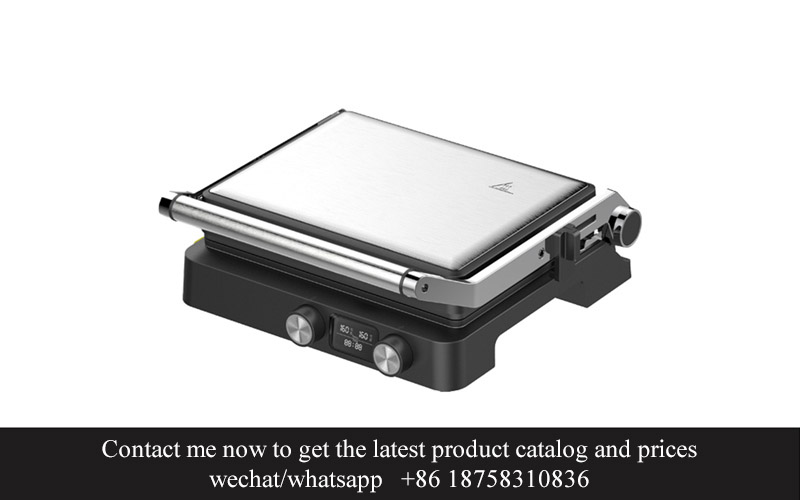
In the ever-evolving landscape of the air fryer OEM market, opportunities abound for businesses looking to capitalize on the growing demand for healthier cooking solutions. From strategic partnerships to innovative design, the path to success is paved with careful planning and a keen understanding of market dynamics. Here’s a glimpse into what it takes to seize these opportunities:
Navigating the complexities of the air fryer OEM market requires a keen eye for detail and a commitment to quality. With consumers increasingly seeking out healthier alternatives to deep-frying, the market for air fryers has seen a surge in demand. This shift has created a fertile ground for OEMs to develop and distribute high-quality, innovative air fryer products.
Understanding the needs of the market is key. By analyzing consumer preferences and behavior, OEMs can tailor their products to meet specific requirements. For instance, incorporating smart technology into air fryers allows for personalized cooking experiences, while energy-efficient designs cater to eco-conscious consumers. This alignment with market trends ensures that products not only meet but exceed customer expectations.
Building strong partnerships with suppliers and manufacturers is another critical aspect. Collaborating with reliable partners ensures a smooth supply chain, which is essential for meeting production demands and maintaining product quality. Additionally, these partnerships can lead to shared innovation, as suppliers often bring new materials or technologies to the table.
Customization is a game-changer in the air fryer OEM market. Offering a range of models with different features and functionalities allows OEMs to cater to a broad customer base. From compact countertop models to larger, family-sized units, diversity in product offerings can open up new markets and customer segments.
Marketing and branding play a significant role in the success of air fryer OEMs. Effective marketing strategies help to build brand recognition and trust. By highlighting the health benefits, energy efficiency, and innovative features of air fryers, OEMs can appeal to consumers who are looking for a healthier lifestyle. Social media campaigns, influencer partnerships, and targeted advertising can all contribute to a strong market presence.
Customer service and after-sales support are often overlooked but are vital components of a successful air fryer OEM business. Providing excellent customer service not only ensures customer satisfaction but also fosters brand loyalty. By offering comprehensive support, including troubleshooting guides, user manuals, and warranty services, OEMs can set themselves apart from competitors.
The rise of the air fryer market is closely tied to the broader trend of health consciousness. As consumers become more aware of the nutritional impact of their food choices, they are seeking out cooking appliances that can help them maintain a balanced diet without sacrificing taste. This trend is likely to continue, presenting OEMs with a steady stream of opportunities.
Innovation is at the heart of the air fryer OEM market. From advancements in heating technology to the integration of smart features, continuous innovation drives consumer interest. OEMs that invest in research and development can stay ahead of the curve, offering cutting-edge products that appeal to tech-savvy consumers.
As the market expands, so does the competition. To thrive, air fryer OEMs must stay agile and adaptable. This means being willing to pivot strategies, adjust product lines, and embrace new technologies. A flexible approach allows businesses to respond quickly to market changes and consumer demands.
In the air fryer OEM market, the potential for growth is vast. However, success is not guaranteed. It requires a strategic focus on quality, innovation, and customer satisfaction. By building strong partnerships, investing in marketing, and staying attuned to market trends, OEMs can position themselves to capitalize on the opportunities that the air fryer market presents. The future looks promising for those who are ready to seize the day.